-
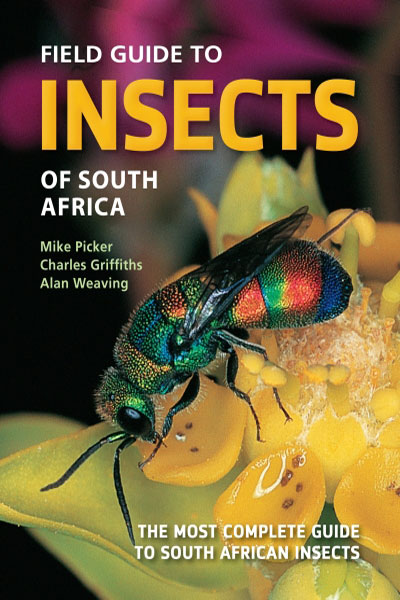 This is an updated and revised edition of the largest, most authoritative field guide to the insect fauna of South Africa, with detailed descriptions and images of some 1,500 of the most common, most economically and ecologically important, and most interesting and attractive insects in the region.
This is an updated and revised edition of the largest, most authoritative field guide to the insect fauna of South Africa, with detailed descriptions and images of some 1,500 of the most common, most economically and ecologically important, and most interesting and attractive insects in the region. -
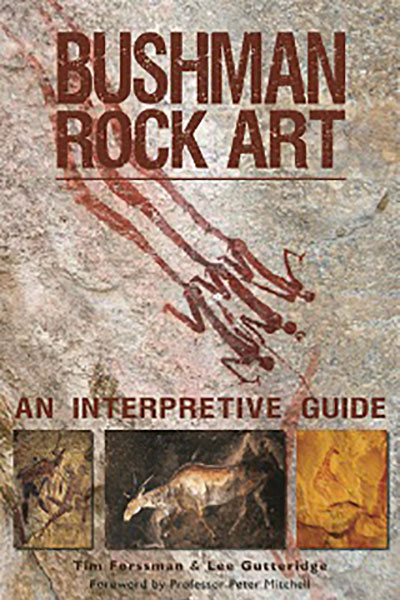 The prehistoric record of southern Africa extends back some 2 million years. The oldest cultural artefacts are stone tools such as hand axes, cleavers, and choppers. In more recent centuries, archaeologists have found an extensive repertoire of artefacts including not only stone tools, but tools of bone, wood and shell as well as beads, jewellery, grinding stones, clothing, fishing equipment, burials and southern Africa's enigmatic rock art.
The prehistoric record of southern Africa extends back some 2 million years. The oldest cultural artefacts are stone tools such as hand axes, cleavers, and choppers. In more recent centuries, archaeologists have found an extensive repertoire of artefacts including not only stone tools, but tools of bone, wood and shell as well as beads, jewellery, grinding stones, clothing, fishing equipment, burials and southern Africa's enigmatic rock art. -
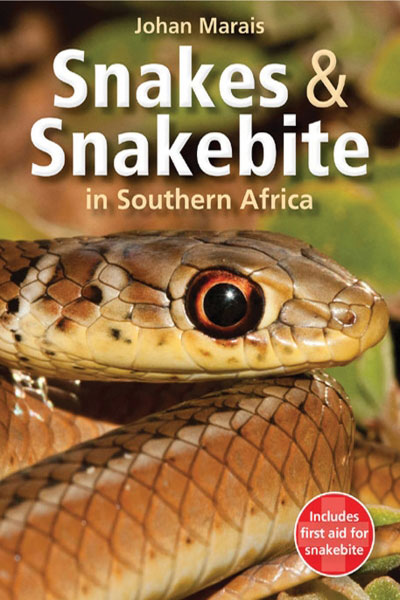 An essential guide to identifying all dangerous snakes and common harmless snakes in southern Africa, as well as quick and important practical advice on first aid measures in the case of snakebite. Simple icons, distribution maps, succinct text and numerous full-colour photographs assist with easy identification of snakes commonly encountered in the region. Symptoms and treatment of snakebites are described, providing the reader with vital first-aid information.
An essential guide to identifying all dangerous snakes and common harmless snakes in southern Africa, as well as quick and important practical advice on first aid measures in the case of snakebite. Simple icons, distribution maps, succinct text and numerous full-colour photographs assist with easy identification of snakes commonly encountered in the region. Symptoms and treatment of snakebites are described, providing the reader with vital first-aid information. -
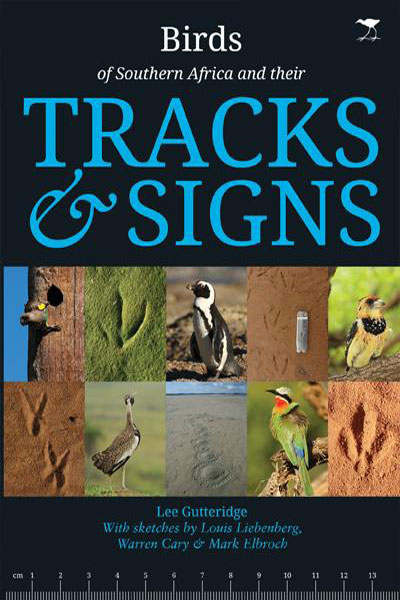 This book is a totally fresh approach to observing birds in Southern Africa. It affords you the opportunity to gather previously inaccessible and indecipherable information in the form of tracks and signs left behind by our avifauna. The book explores the unique details of the spoor, or tracks, of many species of birds. This is done in multiple ways including by observing their droppings, examining their feeding behaviour as well as their general nesting structures. It is remarkable how tracks and signs in nature help you to enrich your knowledge of bird species.
This book is a totally fresh approach to observing birds in Southern Africa. It affords you the opportunity to gather previously inaccessible and indecipherable information in the form of tracks and signs left behind by our avifauna. The book explores the unique details of the spoor, or tracks, of many species of birds. This is done in multiple ways including by observing their droppings, examining their feeding behaviour as well as their general nesting structures. It is remarkable how tracks and signs in nature help you to enrich your knowledge of bird species. -
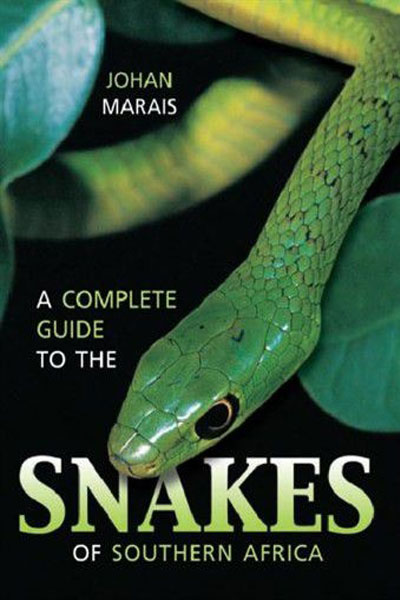 This detailed and comprehensive guide to the 151 snakes indigenous to southern Africa covers all essential aspects of snake biology and behaviour. Now in its second edition, A Complete Guide to the Snakes of Southern Africa has been updated, revised, and expanded to include at least 11 newly discovered and 30 re-classified species and sub-species. New information based on international scientific research has been included in the species accounts relating to behaviour, identification, reproduction, and snake venom.
This detailed and comprehensive guide to the 151 snakes indigenous to southern Africa covers all essential aspects of snake biology and behaviour. Now in its second edition, A Complete Guide to the Snakes of Southern Africa has been updated, revised, and expanded to include at least 11 newly discovered and 30 re-classified species and sub-species. New information based on international scientific research has been included in the species accounts relating to behaviour, identification, reproduction, and snake venom. -
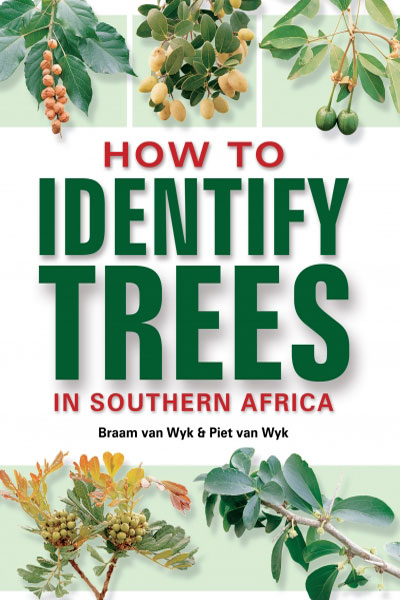 This book’s title says it all! Now in an updated second edition, it provides a clear understanding of how trees are constructed and what to look for when identifying a tree. The book is divided into two parts: • Part 1 describes and clearly illustrates the different parts of a tree and their role in tree identification. • Part 2 features a key to 43 tree groups, based on easy-to-observe stem and leaf features.
This book’s title says it all! Now in an updated second edition, it provides a clear understanding of how trees are constructed and what to look for when identifying a tree. The book is divided into two parts: • Part 1 describes and clearly illustrates the different parts of a tree and their role in tree identification. • Part 2 features a key to 43 tree groups, based on easy-to-observe stem and leaf features. -
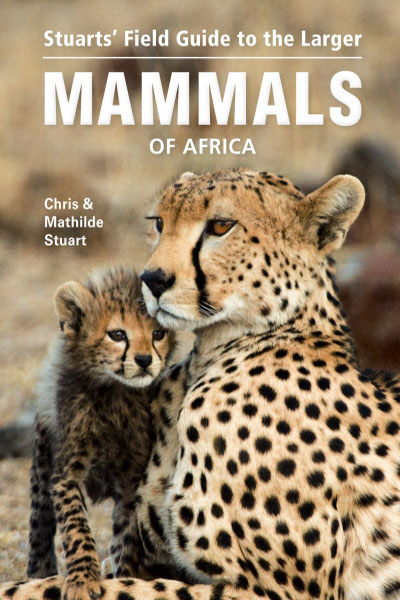 Of the more than 5,500 mammal’s species worldwide, at least 1,200 occur in Africa. Stuarts’ Field Guide to the Larger Mammals of Africa concentrates on the more visible and easily distinguished larger species, as well as some of the more frequently seen smaller mammals. This new edition has been extensively revised, expanded, and redesigned and includes: the most recent research and taxonomy, revised distribution maps and many new images, colour-coded grouping of orders.
Of the more than 5,500 mammal’s species worldwide, at least 1,200 occur in Africa. Stuarts’ Field Guide to the Larger Mammals of Africa concentrates on the more visible and easily distinguished larger species, as well as some of the more frequently seen smaller mammals. This new edition has been extensively revised, expanded, and redesigned and includes: the most recent research and taxonomy, revised distribution maps and many new images, colour-coded grouping of orders. -
 First published in 1986, Smithers' mammals are an authoritative and popular guide to the mammals of Southern Africa. This revised and updated edition incorporates the latest information brought to light by molecular genetics, while remaining accessible to the layperson and handy in the field. Each entry includes an in-depth species description; notes on habitat, behaviour, diet, and conservation status; accurate illustrations and spoor drawings; and a distribution map.
First published in 1986, Smithers' mammals are an authoritative and popular guide to the mammals of Southern Africa. This revised and updated edition incorporates the latest information brought to light by molecular genetics, while remaining accessible to the layperson and handy in the field. Each entry includes an in-depth species description; notes on habitat, behaviour, diet, and conservation status; accurate illustrations and spoor drawings; and a distribution map. -
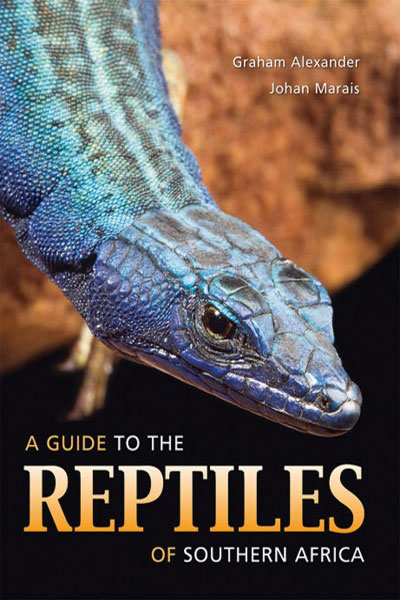 Drawing on the latest scientific research, the authors introduce the book with a discussion of reptile identification, diversity, biology, distribution patterns, and where to find and observe them, as well as unravelling the facts and fallacies of snakebites. Written in a lively and accessible way, the subsequent chapters offer insight into: Identification to group level, with an inclusive list of related species A detailed description of appearance, together with colourful images Biology and behaviour of each group
Drawing on the latest scientific research, the authors introduce the book with a discussion of reptile identification, diversity, biology, distribution patterns, and where to find and observe them, as well as unravelling the facts and fallacies of snakebites. Written in a lively and accessible way, the subsequent chapters offer insight into: Identification to group level, with an inclusive list of related species A detailed description of appearance, together with colourful images Biology and behaviour of each group -
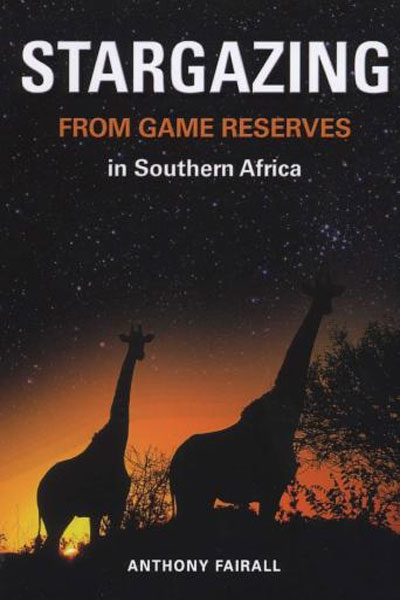 Stargazing from game reserves in Southern Africa offers visitors to game and nature parks an exciting night-time activity in the bush, giving them an opportunity to turn their binoculars skyward after dark.
Stargazing from game reserves in Southern Africa offers visitors to game and nature parks an exciting night-time activity in the bush, giving them an opportunity to turn their binoculars skyward after dark. -
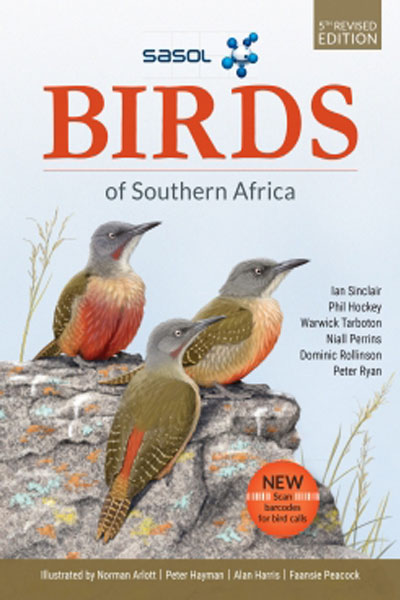 Sasol birds of Southern Africa remains the region's most comprehensively illustrated and trusted field guide. This fourth edition has been greatly improved by the addition of group introductions, calendar bars showing species' occurrence and breeding periods, a section on 'how to use this book', as well as sonograms depicting the calls of tricky bird groups.
Sasol birds of Southern Africa remains the region's most comprehensively illustrated and trusted field guide. This fourth edition has been greatly improved by the addition of group introductions, calendar bars showing species' occurrence and breeding periods, a section on 'how to use this book', as well as sonograms depicting the calls of tricky bird groups. -
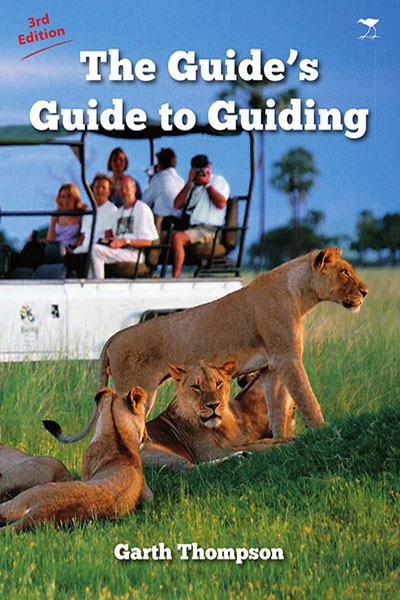 Guides Guide to Guiding Kindle Edition. The Guide's Guide to Guiding is written by veteran wildlife safari guide Garth Thompson and is aimed at informing and educating those that have a love and appreciation for the great outdoors – and a desire to share this passion with others.
Guides Guide to Guiding Kindle Edition. The Guide's Guide to Guiding is written by veteran wildlife safari guide Garth Thompson and is aimed at informing and educating those that have a love and appreciation for the great outdoors – and a desire to share this passion with others. -
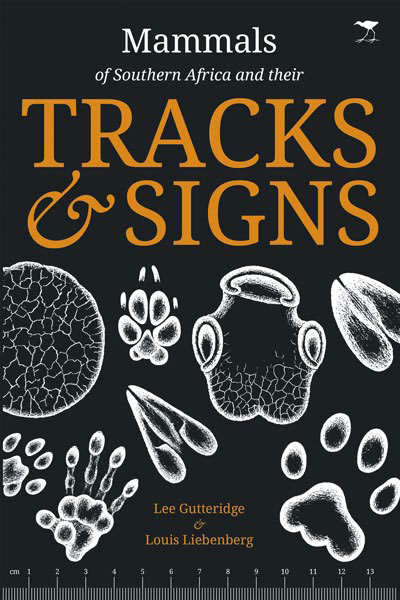 Tracking is a much-loved, yet difficult, subject that attracts at least some of the attention of almost every bush-goer who ventures into the wild places of southern Africa. The ability to accurately read difficult, partial, or little-seen signs left in the soil or sand is rare and largely the domain of professionals.
Tracking is a much-loved, yet difficult, subject that attracts at least some of the attention of almost every bush-goer who ventures into the wild places of southern Africa. The ability to accurately read difficult, partial, or little-seen signs left in the soil or sand is rare and largely the domain of professionals. -
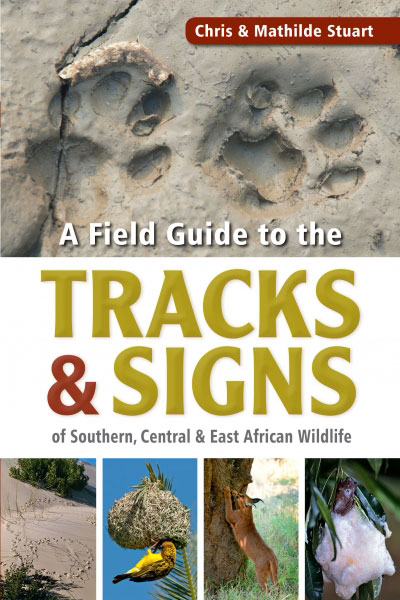 Originally published in 1994, A Field Guide to Tracks and Signs of Southern and East African Wildlife quickly became the standard reference to the subject in the region, reprinting many times. This new edition provides the most detailed coverage of tracks, droppings, bird pellets, nests and shelters and feeding signs, not only for mammals, but also for birds, reptiles, insects, and other invertebrates. Greatly expanded, this extensive update now features full colour throughout.
Originally published in 1994, A Field Guide to Tracks and Signs of Southern and East African Wildlife quickly became the standard reference to the subject in the region, reprinting many times. This new edition provides the most detailed coverage of tracks, droppings, bird pellets, nests and shelters and feeding signs, not only for mammals, but also for birds, reptiles, insects, and other invertebrates. Greatly expanded, this extensive update now features full colour throughout. -
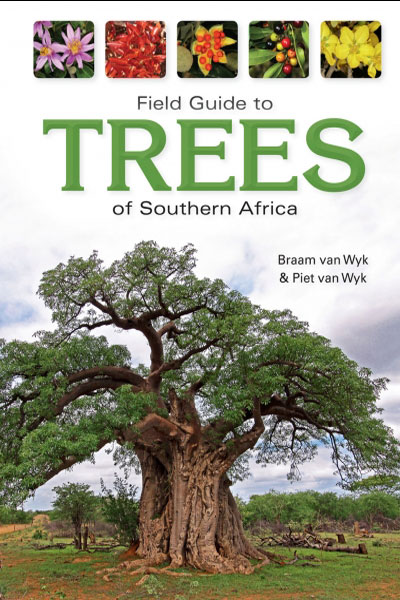 This comprehensively updated and expanded edition of the region’s best-selling field guide to trees offers much, much more than the highly successful first edition. Fully updated text (including additional species entries) and distribution maps, numerous new photographs and a new 87-page section of full-tree photographs makes this well-loved guide even more indispensable in the field.
This comprehensively updated and expanded edition of the region’s best-selling field guide to trees offers much, much more than the highly successful first edition. Fully updated text (including additional species entries) and distribution maps, numerous new photographs and a new 87-page section of full-tree photographs makes this well-loved guide even more indispensable in the field. -
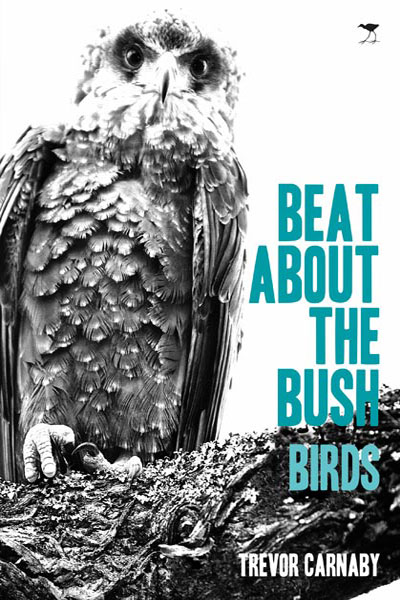 Revealing fascinating insights into the mysterious lives of bird’s native to the mother continent, this remarkable guide exhibits the many vibrantly colourful species found in the South African bush. Providing an in-depth discourse on all aspects of bird life--detailing their myriad forms, survival strategies in a harsh landscape, breeding and feeding behaviours, movements, migrations, preferred habitat, unique behavioural patterns, and vocalizations--this comprehensive manual also expertly advises on how to easily and accurately identify each individual species.
Revealing fascinating insights into the mysterious lives of bird’s native to the mother continent, this remarkable guide exhibits the many vibrantly colourful species found in the South African bush. Providing an in-depth discourse on all aspects of bird life--detailing their myriad forms, survival strategies in a harsh landscape, breeding and feeding behaviours, movements, migrations, preferred habitat, unique behavioural patterns, and vocalizations--this comprehensive manual also expertly advises on how to easily and accurately identify each individual species.
